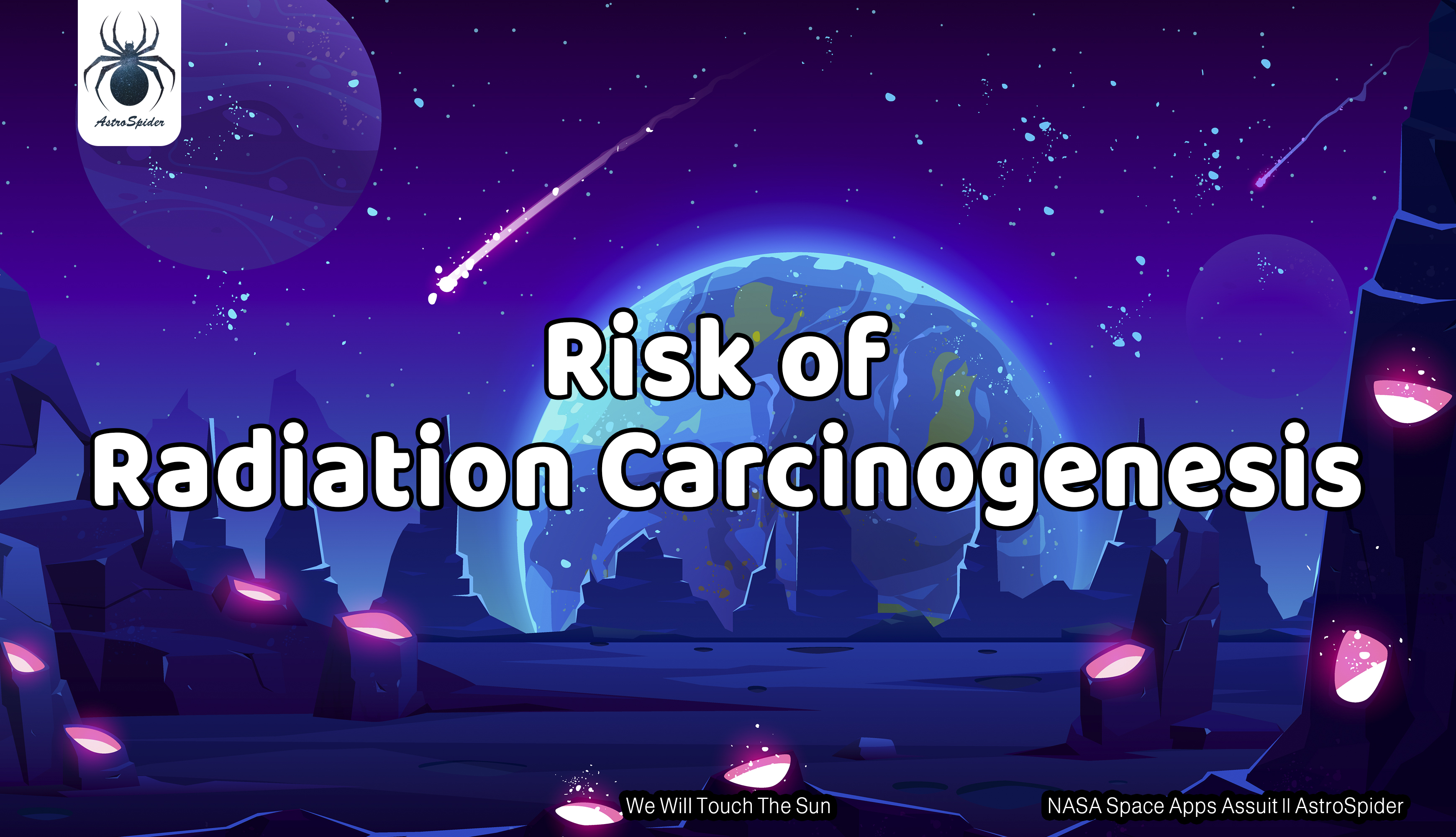
Radiation Carcingenesis
While epidemiological studies of terrestrial radiation-exposed cohorts demonstrate dose-related increases in cancer incidence and mortality at space relevant doses, no epidemiological data exists for exposures to space radiation. The space radiation environment differs from that present on Earth (e.g. x- and gamma-rays) due to the presence of high-energy particles including protons, heavy ions, and neutrons.
Particles produce densely ionizing tracks and impart clustered damage difficult for cells to repair and current animal and cellular research suggests damage induced by particle radiation could increase cancer-related effects compared to x- or gamma-rays (i.e. reduced latency, increased malignancy).
For imagine (The space station sits just within Earth’s protective magnetic field, so while our astronauts are exposed to ten-times higher radiation than on Earth, it’s still a smaller dose than what deep space has in store.)
The NASA Space Cancer Risk (NSCR) model uses an established framework to estimate lifetime cancer risk from radiation exposure as the risk of exposure-induced death (REID).
Human cancer epidemiology data from terrestrial radiation exposures are the basis for the model and a quality factor function is defined to transfer terrestrial radiation to the space environment.
The current quality factor function is indirectly approximated using tumor endpoints from animal experiments and cancer-related endpoints from cellular experiments.
Monte Carlo simulation techniques are used to incorporate uncertainties including radiation quality, dose and dose rate effects, terrestrial epidemiology models, and background population statistics and cancer rates.
Uncertainty distributions can be updated as new relevant data becomes available. No validated medical countermeasures research to investigate biomedical countermeasures is ongoing in animals exposed to charged particles on the ground. Terrestrial cancer therapies continue to progress and may be able to mitigate cancer outcomes.
Shielding
The ability to determine optimal shielding configurations depends on the ability to evaluate the detrimental effects of radiation exposure and balance that with the cost of adding additional shielding and/or the impact of reconfiguring vehicle systems.
Selection of shielding materials and thickness must also consider the type and quantity of secondary radiations produced by the shielding and considering the LET and Z’s of the particles that ultimately reach the target. Such an optimization process must support the requirement of “As Low as Reasonably Achievable (ALARA, NASA Standard 3001, Vol. 1)” with a cost benefit analysis; however, current assessments are limited by the uncertainties involved in the evaluation.
This gap addresses specific issues associated with development of shielding optimization methodologies to accurately evaluate radiation protection strategies while accounting for the inherent multiple uncertainties associated with the problem. For most shield design efforts, effective dose for specific GCR or SPE radiation design environments has been calculated in order to determine the effectiveness of different shielding configurations to meet specific vehicle radiation requirements. However, additional methodologies incorporating probabilistic models are needed to reduce uncertainty in optimization calculations to properly assess the cost (mass savings) vs. benefit of further reducing exposures as required by ALARA. Such integrated optimization methodologies for ALARA do not currently exist.